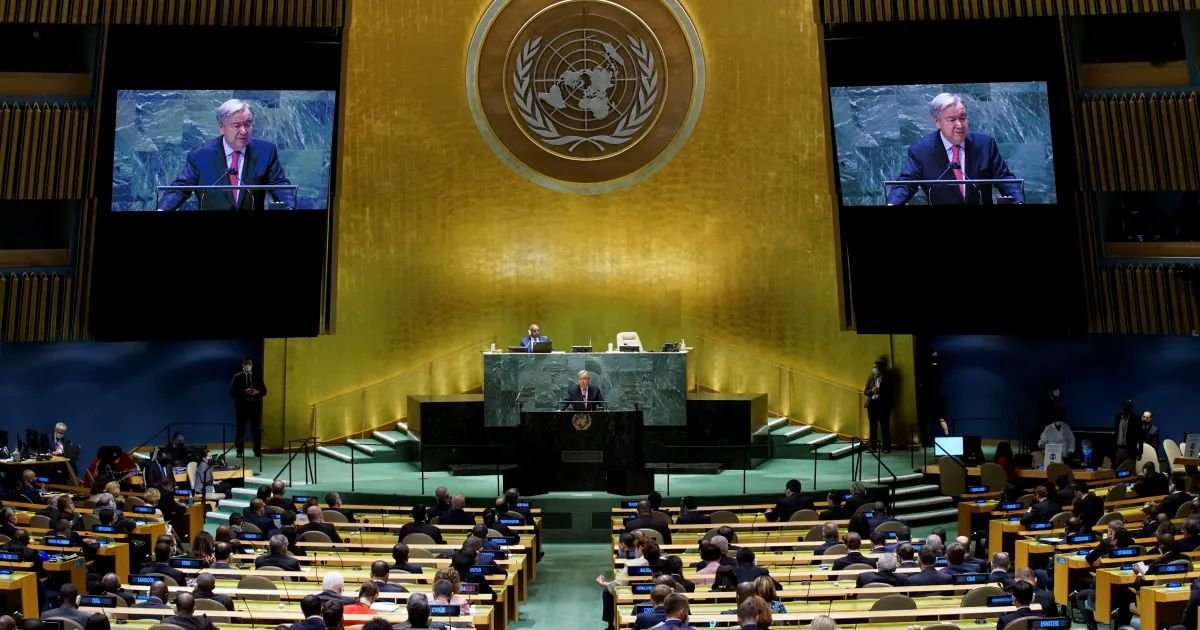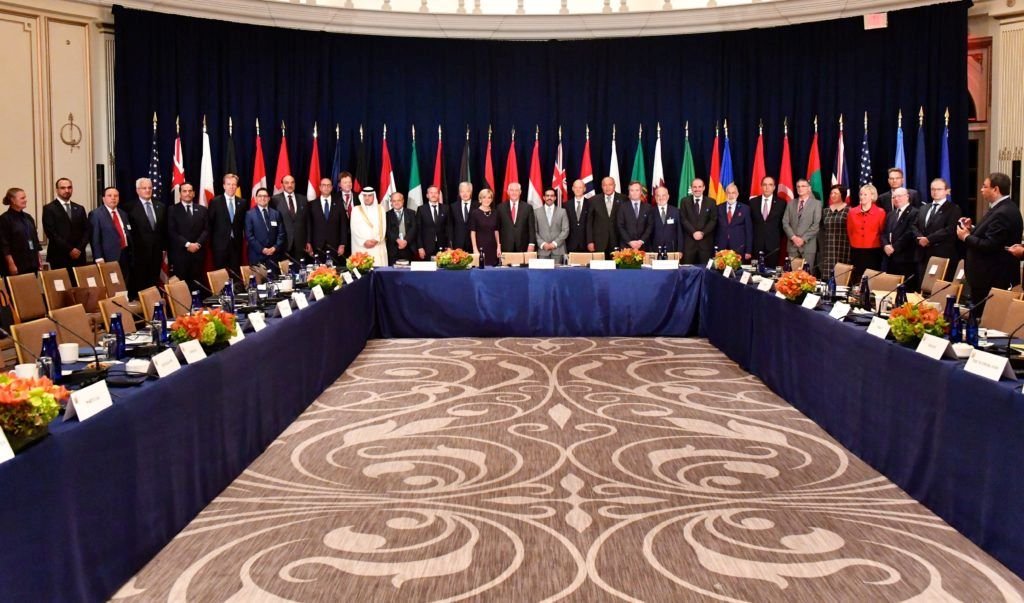SUMMIT OF THE FUTURE: WHAT WOULD IT DELIVER?
PURPOSE
Strengthen international cooperation so it delivers fully and relatively on existing agreements while enabling us to respond effectively to new threats and opportunities for present and future generations. In so doing, restore trust in multilateralism and each other.
BACKGROUND
The 75th anniversary of the UN came at a time when the world was confronting the shared threats of the COVID-19 pandemic and climate change, the risks and opportunities of technological advances, and the stagnation of the Sustainable Development Goals. In recognition of these trends and our unprecedented interconnectedness, Member States pledged to strengthen global governance and asked the Secretary-General for his recommendations to address current and future challenges. The Secretary-General responded with Our Common Agenda, calling for solidarity between people, countries and generations and a corresponding renewal of the multilateral system to accelerate the implementation of existing commitments and fill gaps in global governance that have emerged since 2015.
The report proposed a Summit of the Future as a once-in-a-generation opportunity to take these steps. The General Assembly decided that the Summit of the Future would take place in September 2024, building on the 2023 SDG Summit and that its outcome would be an intergovernmental negotiated, action-oriented Pact for the Future, comprising a chapeau and five chapters on sustainable development and financing for the product; international peace and security; science, technology and innovation and digital cooperation; youth and future generations; and transforming global governance. At the invitation of Member States, the Secretary-General issued eleven Policy Briefs containing more detail on specific proposals from Our Common Agenda to support Member States in their preparations for the Summit.
IMPACT
SAFEGUARDING THE FUTURE
Decision-making at the global level consciously avoids foreseeable harms to and safeguards the interests of future generations through an Envoy to represent them, a political declaration (as part of the Pact for the Future) with clear commitments, a dedicated intergovernmental forum to debate progress, and better use of foresight, data and science to evaluate the future impact of policies and actions. Present generations also benefit from this longer-term thinking.
MANAGING GLOBAL SHOCKS
International responses to complex global shocks of significant scale are improved through the standing authority of the Secretary-General to convene a time-bound Emergency Platform that would add value through high-level, multi-sectoral coordination, advocacy, and accountability for the contributions of participating actors. This would not displace or duplicate existing mechanisms.
MEANINGFUL INCLUSION OF YOUNG PEOPLE
Youth participation, and consequently trust, in decision-making is expanded and strengthened through dedicated national youth consultative bodies, a global standard for meaningful youth engagement, a framework to track progress, avenues for youth participation in UN decision-making processes, and a standing UN Youth Townhall.
MEASURING WHAT WE VALUE
We measure what really matters for sustainable development impact, progress and resource allocation based on a set of critical metrics that complement GDP to cover what is needed for prosperity, human well-being, and protection of our natural environment. This is achieved through a political commitment to value what counts, accompanied by a dashboard of key indicators and support to countries on related statistical and data capacities.
OPEN, FREE, AND SECURE DIGITAL FUTURE
We harness the opportunities and manage the risks of digital technologies by adopting a Compact as part of the Pact for the Future, which outlines a vision of an open, accessible, and secure digital future for all anchored in global cooperation for human development and SDG progress, human rights, and governance by humans for humans.
The Compact offers a digital governance framework to guide global, regional, and national approaches around shared principles, priorities, and objectives – such as accelerating digital connectivity for all, building digital public infrastructures, strengthening public regulatory capacities, and nurturing AI governance. It promotes sustained multi-stakeholder dialogue and cooperation via existing forums, an annual Digital Cooperation Forum, and a new AI Body to align artificial intelligence with human rights, the rule of law, and the common good.
TRANSFORMING EDUCATION
A new vision for creating learning societies emerges, with education and life-long learning universally recognized as a global public good. International cooperation is strengthened to advance the vision and support the delivery of commitments made at the 2023 Transforming Education Summit.
INTEGRITY IN INFORMATION
The digital space is safer and more inclusive with all stakeholders protecting human rights, guided by a voluntary UN Code of Conduct for Information Integrity on Digital Platforms, with an enhanced understanding of information integrity globally, as well as a dedicated capacity in the UN Secretariat to support the implementation of the Code and to respond to online mis- and disinformation and hate speech affecting UN mandate delivery and substantive priorities. These developments might be acknowledged in the Pact for the Future.
A GLOBAL FINANCIAL SYSTEM THAT WORKS FOR ALL
A transformed international financial architecture is fit for purpose, more inclusive, just, representative, effective, and resilient, responsive to the world today rather than as it looked following the Second World War. This architecture invests up-front in SDGs, climate action, and future generations. This entails reforms in the following six areas:
(i) global economic governance, including enhancing the voice and representation of developing countries in the decision-making of the international financial institutions and setting up an apex body bringing together the entire system under the United Nations to enhance its coherence and align its priorities with the 2030 Agenda;
(ii) lasting solutions on debt relief and lowering the cost of sovereign borrowing, including through the creation of a Debt Workout Mechanism and, ultimately a sovereign debt authority;
(iii) international public finance, including massively scaling up development and climate financing, including through Multilateral Development Banks;
(iv) global financial safety net, including ensuring that all countries have access to the full capital account toolbox, revamping the role and use of SDRs, ending surcharges, and setting up a multilateral currency swap facility;
(v) addressing short-termism in capital markets and sustainable finance; and
(vi) an inclusive and equitable global tax architecture that combats tax avoidance and evasion
The Secretary-General’s proposals for the Summit of the Future could, if adopted, accelerate the implementation of each of the Sustainable Development Goals in the following ways.
NO POVERTY- Achieving SDG 1 to reduce poverty requires preventing conflict, building resilience of vulnerable populations, engaging youth, employing digital technologies for social protection, using tools for disaster response, and crafting targeted responses to poverty risks with demographic and non-traditional data. The goal of eradicating extreme poverty must address income inequality and uphold “leave no one behind."
ZERO HUNGER- In our increasingly connected world system, regional conflicts accelerate hunger elsewhere, while pervasive climate change threatens the food security of future generations. Tackling global hunger in SDG 2 entails fast, standard solutions via digital technologies (drones, apps) that enhance agricultural productivity, sustainable policies, resource mobilization and financing of food services.
GOOD HEALTH AND WELL-BEING- Achieving SDG 3 through comprehensive, inclusive healthcare for all means new metrics on well-being, investment in youth health, international cooperation on sustainable healthcare financing, less public health disinformation, digital and space innovations for vaccine production and delivery, disease monitoring and health advancement research.
QUALITY EDUCATION- Progress on SDG 4 means investing in human capital and well-being by advancing accessible, inclusive and affordable learning. Digital platforms and satellite-based remote learning further connectivity and skills training, while economic growth via tax cooperation finances such education.
GENDER EQUALITY- Advancing SDG 5 on gender equality and women's empowerment entails measuring unpaid care work, recognizing climate and pandemic impacts on vulnerable women, ensuring their financial access, combating gender-related disinformation, harnessing digital technologies for their benefit, promoting gender integration in global finance and putting women and girls at the centre of security and peace policies.
CLEAN WATER AND SANITATION- Achieving SDG 6 will require using digital technologies and reliable metrics for water management, addressing clean water access in policy, mitigating sanitation challenges posed by natural disasters, affordably financing water sanitation in developing countries and investing in long-term infrastructure for water and sustainable environments.




